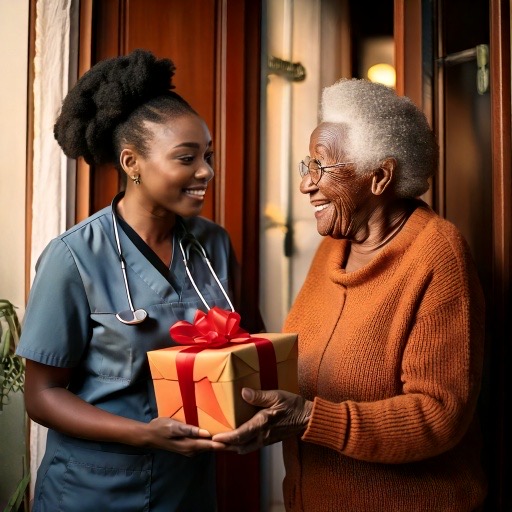The Elevated Risks of Carbon Monoxide Poisoning in the Elderly
Greater risks are associated with Carbon Monoxide Poisoning in the Elderly, as increased age and other vulnerabilities reduces recovery.
By Rebecca Martin
When the deaths of Gene Hackman and his wife, Betsy Arakawa Hackman became headlines raising immediate concerns that carbon monoxide may have been to blame, it was an entirely plausible explanation. But, even after the causes of death were determined to be allegedly from other causes, it still left us with the question of how could two prominent elderly individuals perish in such a manner, their absence unnoticed by friends and family?

Carbon Monoxide Poisoning in the Elderly comes with increased risk of mortality and disability, as premorbid cardiac and brain health are significant predictors of outcome.
This brings up the interesting question: How safe are your elderly friends and family? And what can you do to make sure they have all the means at their disposal to avoid a similar situation, especially as it relates to the potential exposure to deadly carbon monoxide poisoning.
The elderly are far more susceptible to the effects of carbon monoxide poisoning because they are more likely to have pre-existing health conditions, “such as chronic heart disease, anemia, or respiratory problems”. https://www.epa.gov/sites/default/files/2015-08/documents/pcmp_english_100-f-09-001.pdf In addition, they have a lower physiological tolerance and are slower to recover from hypoxia.
Carbon Monoxide Poisoning in the Elderly is a Major Concern
If you examine the statistics forGreater risks are associated with carbon monoxide poisoning in the elderly versus the general population, you will notice a great discrepancy in the number of cases reported involving elderly persons.
A Centers for Disease Control and Prevention (CDC) study of data from 2000 to 2009 found the incidence of CO poisoning in adults aged 65 years and older to be 6.2 persons per 1 million of US population, compared to children aged 17 years and younger at 25.7, adults aged 18 to 44 years at 19.4, and adults aged 45 to 64 at 11.4.
Although all data is said to represent only a fraction of actual cases of carbon monoxide poisonings, it is widely postulated that the gap in reported carbon monoxide poisoning in the elderly is most likely due to misdiagnosis in the emergency room as other pre-existing causes are commonly the first the first diagnosis with carbon monoxide ignored as a possible contributing factor.
This inclination is traceable to how these calls are handled initially by first responders who are more likely to look at other health issues when responding to a call involving an elderly person than they would when responding to a similar call involving a younger individual. And, in the absence of a sounding carbon monoxide alarm, or the presence of additional younger victims, carbon monoxide poisoning may not be suspected at all.
This is exacerbated by the fact that carbon monoxide poisoning symptoms can mimic many of the symptoms of the chronic illnesses common in the elderly population, dizziness, confusion, disorientation, nausea, chest pain, headache, seizure and syncope (loss of consciousness due to a drop in blood flow to the brain).
Additionally, carbon monoxide detectors which are designed to sound at levels injurious to an adult male, do not take into account an elderly person with a pre-existing health condition and lower immunologic reserves.
Because of this tendency to treat elderly in a different fashion in the medical community, it is important to create an environment for elderly persons in which a clear and definite signpost is present to announce that this may not be a routine call about a medical condition and that carbon monoxide is the culprit. This is especially important because if carbon monoxide is not suspected, there is a risk that an older person might be returned to the same environment or that someone else in the home is at risk.
How to Prevent Carbon Monoxide Poisoning in the Elderly
First, making sure that there are adequate and functioning carbon monoxide detectors in place is essential. But we can go many steps further for elderly persons.
Elderly people are advised that sleeping on the first floor is the safest situation. This provides for easier egress during a fire or carbon monoxide event. Cell phones should be kept bedside for easy access, and ideally, in case a carbon monoxide alarm goes off, set up to alert a neighbor, family member or friend on their cellphone. Companies who manufacture carbon monoxide detectors often provide this service. It is also a good idea to leave a landline in place, even if it is only for the purpose of dialing out to emergency services.
Carbon Monoxide Alarms, Plus
There are also combination fire/CO alarms which come with bed shakers or strobe lights for those who are vision impaired or hard of hearing.
It is also highly recommended that a personal CO detector is available in the home that can detect lower levels of carbon monoxide that a typical residential carbon monoxide detector will not alarm at.
Carbon monoxide detectors with 10-year batteries are also a good idea for older persons who may not be conscientious about recommended maintenance of their detectors.
Ultimately, a monitored system is the best solution, but not everyone has this option.
Maintenance for furnaces and other gas appliances is also another way family members can assist elderly family members who may put off maintenance due to financial concerns. This should include tasks such as checking to make sure venting is clear, tasks that may be difficult for an elderly homeowner to accomplish.
Education is another key factor. Especially during emergencies when the power may go out. Stressing the importance of not running a portable generator indoors or in an attached garage or running a vehicle in an attached garage. There should also be a reminder for those who are hard of hearing to check to make sure a vehicle with a keyless ignition has been shut off before leaving the garage. Above all, there should be an emphasis that if the alarm sounds, the first and most important step is to LEAVE THE HOUSE and call 911 afterwards.
What can you Do to Reduce Loved Ones Risks?
There are other things friends, neighbors and families can do that are very easily accomplished. Depending on the age, health and living situation of the individual, merely checking in can be lifesaving. Daily phone calls and weekly check ins are the minimum one can do. For those with health issues or limited physical/mental abilities, daily check ins are recommended. In the winter months these check ins are even more important. A walk that hasn’t been shoveled or a yard that hasn’t been mowed or uncollected mail could mean your elderly neighbor may need a quick check in to see if there is something you can do to help. Not every elderly person has family to look out for them or friends to check in.
Seniors living alone are at the most risk due to isolation combined with a slower reaction time.
It is imperative that anyone checking in on the elderly also have a knowledge of carbon monoxide and a protocol of what to do in case carbon monoxide is expected.
We often hear stories of family pets being the heroes in carbon monoxide cases. This is true for the elderly as well. Their pets may provide early warning signs of the presence of carbon monoxide. Pets may succumb first and that is a clear clue that the environment is not safe. Dogs and cats may exhibit flushed red gums and ears initially, small animals may perish unexpectedly. Listening to those concerns could save a life.
In conclusion, the elderly victim of carbon monoxide poisoning is highly unlikely to be diagnosed with carbon monoxide poisoning unless they come into the emergency room with a clear possibility that carbon monoxide may be at fault. The most important witness to this possibility is a carbon monoxide detector. In addition, proper ventilation, regular home maintenance and inspection, proper use of home generators and space heaters, education and symptom awareness for them and their caregivers, emergency preparedness and regular check ins are steps that can prevent a tragedy.
At a time when more seniors are remaining in their homes due to the lack of long-term care, the importance of community awareness is increasingly important. You may be the one who saves a life.
https://carbonmonoxide.com/2024/10/carbon-monoxide-risks-for-seniors.html
The tragedy of Gene Hackman and his wife’s deaths is that he died a full week after his wife had died and it was over a week after his passing that they were discovered by a maintenance worker. From February 11th to February 28th, no one had checked in on them. It serves as a reminder that we need to do better.

Leave a Reply
Want to join the discussion?Feel free to contribute!